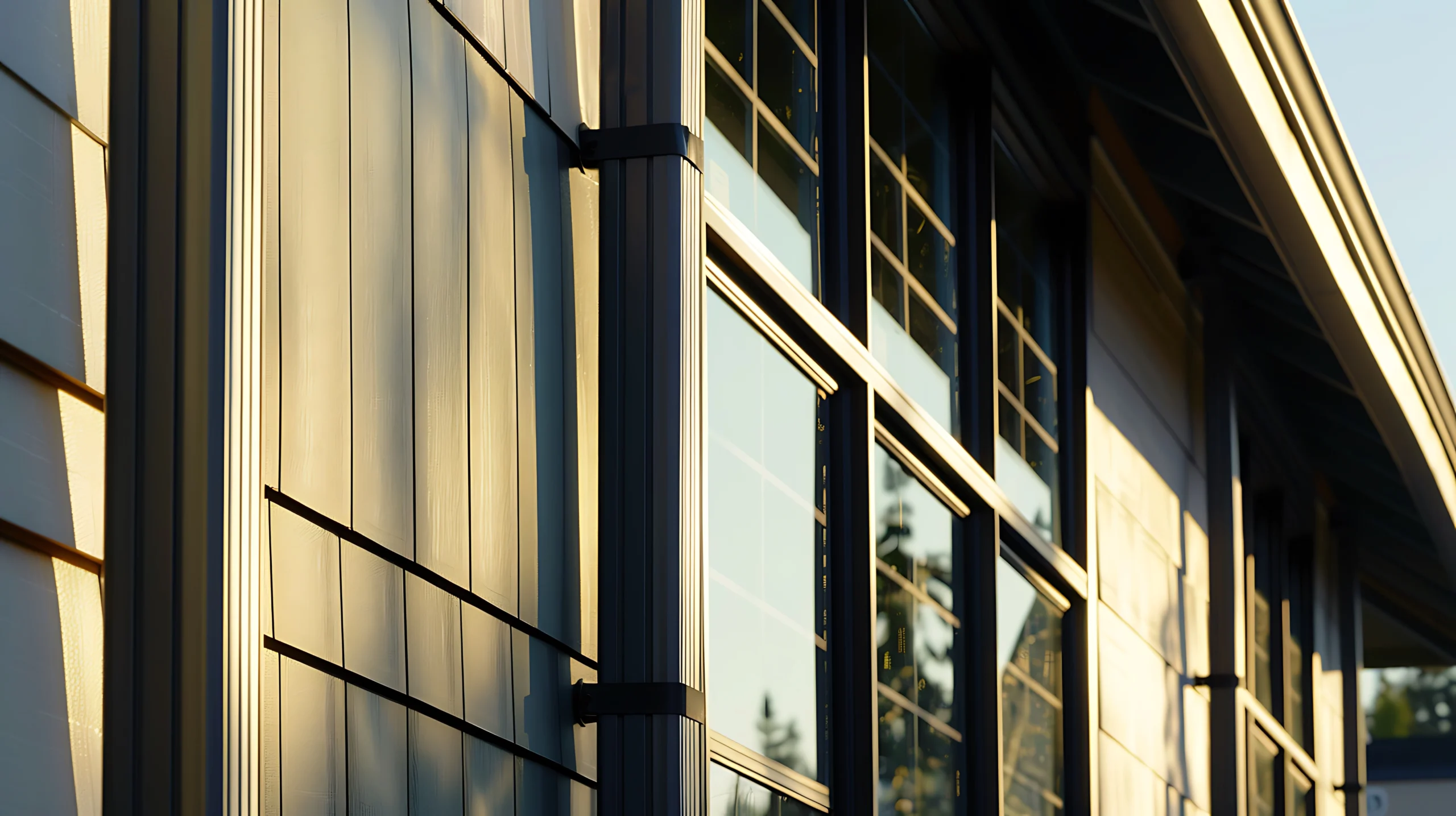Siding Showdown: Pros and Cons of Different Materials
Siding defines your home's aesthetic and adds plenty of curb appeal, but it also performs the all-important function of protecting everything inside. This is what makes choosing the appropriate siding material so important. The right siding sets your home up for long-term durability, efficiency, and style — but with so many options on the market, how do you know which is best?
Wonder no more, and welcome to the siding showdown. Below, we break down the pros and cons of today's top siding materials — from vinyl and cedar to LP and fiber cement — to help you decide what's right for your home, climate, and lifestyle.
Learn More About Home Siding Installations from Lifetime
Vinyl Siding: Budget-Friendly but Limited in Performance
Vinyl siding has long been a go-to for homeowners looking for an affordable, low-maintenance option. It's lightweight, comes in a wide range of colors and styles, and resists rot and insect damage.
Pros:
- Economical upfront cost
- Available in many colors and textures
- Requires little maintenance
Cons:
- Prone to cracking in extreme cold
- Can warp in intense heat
- Fades over time and is difficult to repaint
- Offers minimal protection against fire or severe weather
Vinyl can be a decent choice for milder climates and budget-conscious renovations, but it may not offer the long-term durability many homeowners want.
Cedar Siding: Naturally Beautiful but High-Maintenance
There's no denying the charm of real wood. Cedar siding adds warmth, texture, and a rich aesthetic to homes, especially mountain homes that blend into natural surroundings.
Pros:
- Timeless, natural look
- Can be stained or painted in any color
- Offers some insulation value
Cons:
- Requires frequent sealing or painting
- Vulnerable to pests, rot, and moisture damage
- High maintenance, especially in snowy or rainy regions
- Flammable, which is a risk in wildfire-prone areas
Cedar's beauty is unmatched, but it demands ongoing care and isn't always suited to climates like Colorado or fire-sensitive areas like SoCal.
LP Siding: Engineered Wood at a Lower Price
LP SmartSide (or similar pressed wood chip siding) is a popular wood alternative. Made from engineered wood strands and resins, it's lighter and less expensive than traditional wood while offering a similar appearance.
Pros:
- Budget-friendly and lightweight
- Mimics the look of wood
- Easier to install than fiber cement
Cons:
- Vulnerable to moisture, swelling, and rot over time
- Prone to damage from pests and woodpeckers
- Fire resistance is low compared to fiber cement
- Shorter lifespan than more premium options
LP siding may look good initially, but in harsher climates like Colorado or humid conditions near the coast, it can wear down faster than advertised.
Fiber Cement Siding: The Gold Standard for Durability and Style
James Hardie® fiber cement siding is in a class of its own. Made from cement, sand, and cellulose fibers, this composite material offers the best of all worlds: beauty, durability, weather resistance, and low maintenance. While it costs more upfront than vinyl or LP, it delivers superior long-term value.
Pros:
- Extremely durable and long-lasting
- Fire-resistant — does not ignite or burn. In fact, James Hardie conducted fire tests demonstrating that while other siding materials quickly ignite and burn, Hardie fiber cement only scorches on the surface (see the dramatic comparison here)
- Resistant to pests, woodpeckers, mold, and rot — solving persistent pecking problems that plague wood siding
- Withstands Colorado freeze-thaw cycles and Phoenix's dry heat
- Proven to withstand extreme water exposure that would damage other materials (see the water resistance demonstration)
- Beautiful, customizable aesthetic that mimics wood without the upkeep
- Eco-friendly and sustainable
Cons:
- Higher initial investment
- Heavier than other materials (requires experienced installation)
For Colorado homeowners, James Hardie is a top performer — especially in the mountains, where fire resistance and woodpecker-proof siding are must-haves. As we prepare to expand James Hardie fiber cement offerings to San Diego and eventually throughout Southern California, this product's resistance to coastal humidity and wildfires, all while offering unparalleled aesthetic customization, will create even more satisfied customers.
Why Lifetime Trusts James Hardie Siding
At Lifetime Home Remodeling, our siding work goes beyond installation; our goal is to help homeowners protect and elevate their homes with the highest-quality materials on the market. That's why we proudly install James Hardie fiber cement siding throughout our service areas. Its fire resistance, durability, and performance in extreme weather make it the ideal solution for regions with extreme sun, cold, and unpredictable weather shifts.
With expert installation, beautiful design options, and industry-leading product performance, fiber cement is the winning material to upgrade your home's look as well as your peace of mind.
See Your Home's Potential with Hardie™ Designer
Want to see exactly how your home will look with new James Hardie siding? Our sales professionals use the innovative Hardie™ Designer tool, powered by Hover®, to create realistic visualizations of your home's transformation. This cutting-edge technology lets you explore different colors, styles, and design combinations before making your final decision, taking the guesswork out of your home's new look.
Ready to Upgrade Your Home's Exterior? Trust Lifetime.
No matter your style or siding preference, Lifetime Home Remodeling is your trusted partner for expert design guidance, professional installation, and high-performance products that stand the test of time. From the foothills of Denver to the heart of Phoenix and the coasts of California, we're here to protect what matters most: your home.
Contact Lifetime today to schedule your free consultation and see why homeowners across the West choose us for siding that's built to last.
Our teams of experts are here to help
Contact UsDoor Expert
Expert
Expert
Expert

